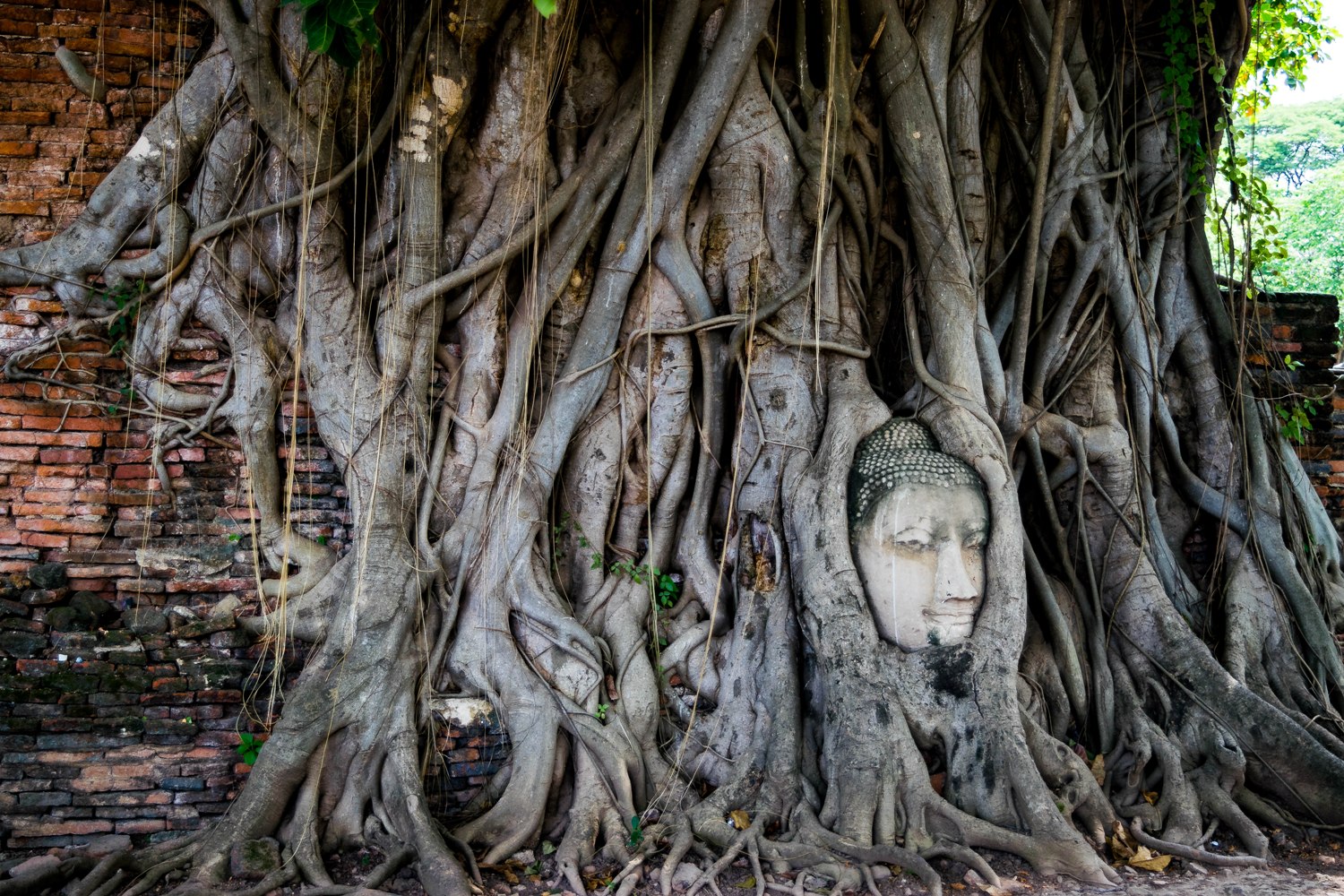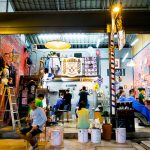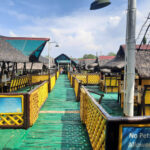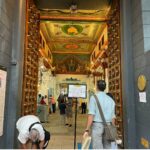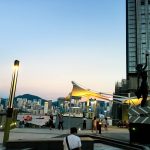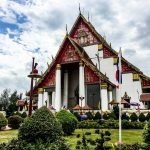The Bodhi tree, the same tree where Buddha was said to have achieved enlightenment, is the most photographed tree in the Phra Nakhon Si Ayutthaya District. But there’s one in particular that beguiles tourists the most—the tree whose roots are wrapped around a detached Buddha head—which greets visitors at Wat Mahathat.
Maintaining a respectful distance, tourists huddle up to have their photographs taken with the historic, if not mythical, artifact, in the background. At times, wandering tourists, with their sunvisors and water bottles, crouch under the shade to regroup. It is sweltering hot, but Ayutthaya obliges with occasional gusts of wind to return the favor.
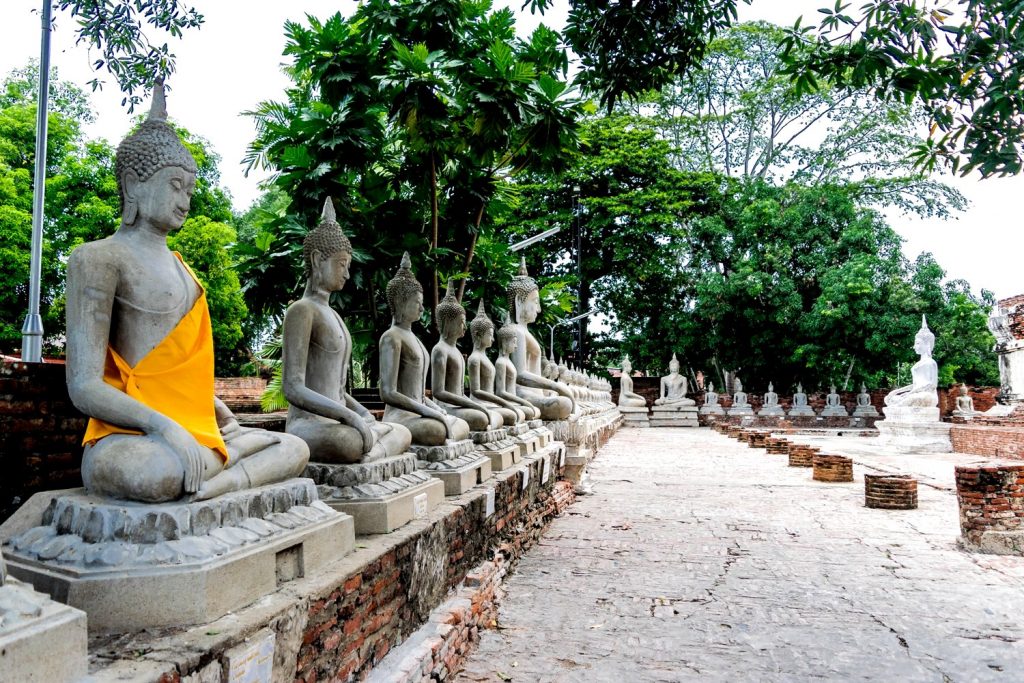
It’s a returned favor, indeed. Tourists have been keeping ancient ruins, such as the Wat Mahathat, alive. Thailand as a whole logged a record 32.59 million foreign tourists in 2016, reports Voice of America. Data from the the Tourism Authority of Thailand also show numbers have climbed by 10 percent, with receipts reflecting $71.4 billion in income.
The Ayutthaya province is a UNESCO Heritage Site that is maintained with funds coming from the Thai government and private sector. The area covers 289 hectares of land that is home to temples, Buddhist monasteries, and the last surviving prangs or towers from palaces. Among the popular points of interest in Phra Nakhon si Ayutthaya are the aforementioned Wat Mahathat, and Wat Phra Si Sanphet, Viharn Phra Mongkol Bophit, and Wat Chai Wattanaram.
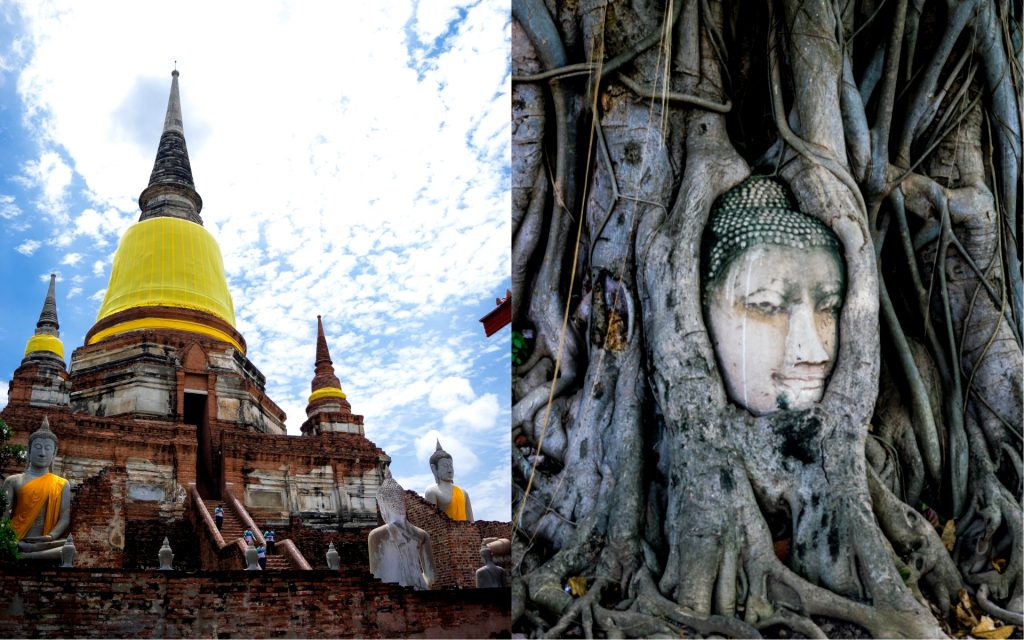
Glorious past
Ayutthaya history traces its beginnings to 1350, when it was established as the second capital of the Kingdom of Siam (Sukhothai was the first). The city was the epicenter of global trade and diplomacy, where foreign ambassadors, important politicians and affluent merchants seek residence.
According to UNESCO, the capital was strategically located above the Gulf of Siam to avoid flooding and foreign invasions. Like other advanced ancient cities, the city was constructed near an infinite water source based on a complex city planning grid.
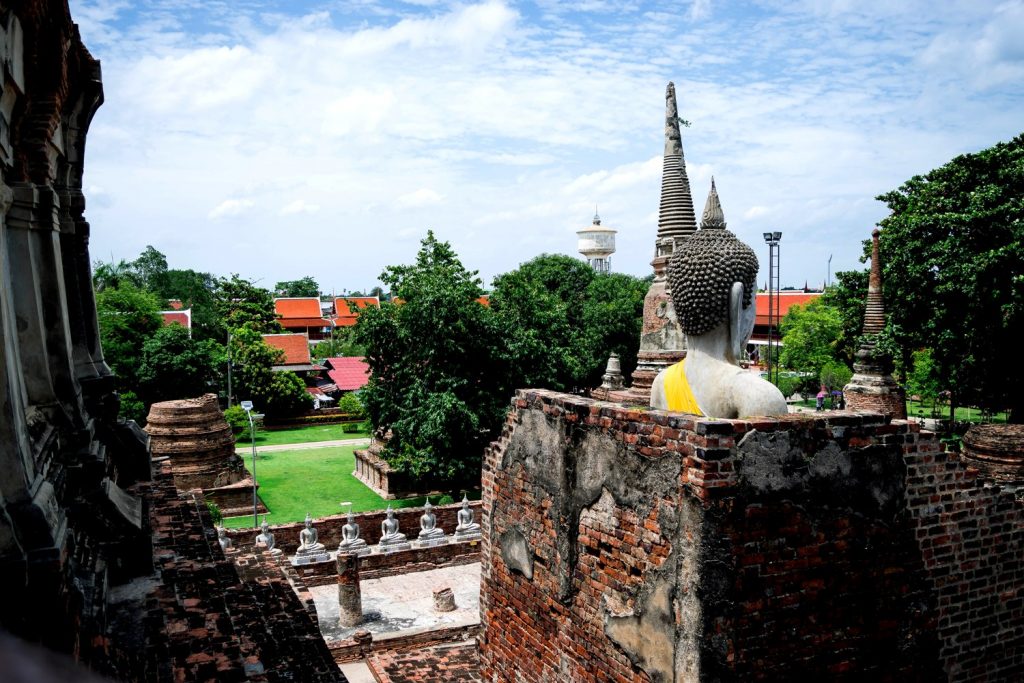
This was centuries before the Burmese army ravaged the city and razed it to the ground. Today, what remains of the former royal capital are its ruins, sustained by the affection of tourists and locals and its thriving micro-commerce. A splice of the government’s billion-dollar income are trickling down to local industries composed of micro businesses and temps such as tourist guides, barkers and trinket vendors.
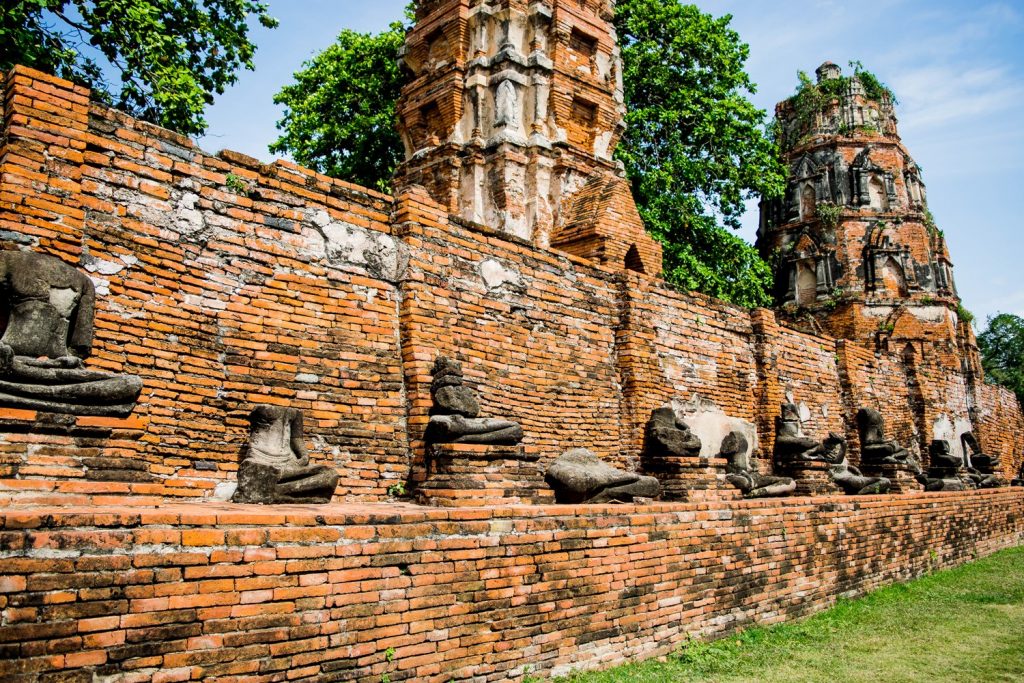
Exploring the ruins and temples
While it is common to see tourists cycling around Ayutthaya province, a popular way to get around the local landmarks is by chartering a vehicle. This is the best way to go if your fitness level does not permit you to go on a bike tour of the ancient city.
Hire a tour guide to drive you around for just 1500 baht more or less. Your tour guide/driver will ask you to pinpoint the sites you wish to visit in order from a slim collection of photographs. This is particularly important if time is of the essence, especially for visitors on a day trip in Ayutthaya.
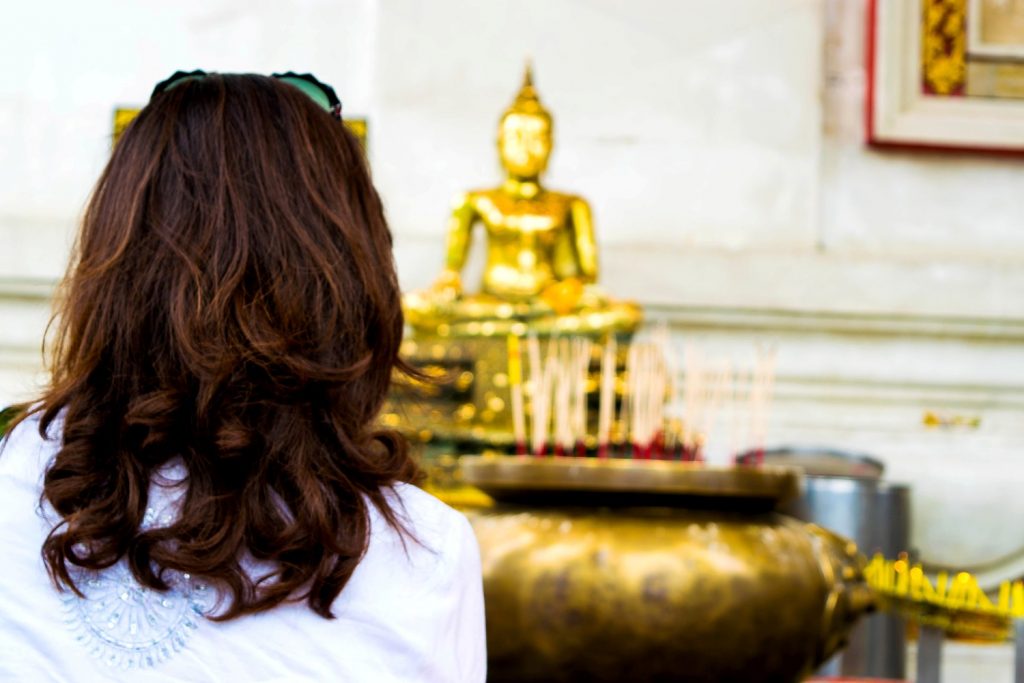
Where to stay in Ayutthaya
Accommodations in Ayutthaya province come in the form of guesthouses, hostels and hotels. Accommodations in the upper tier include the Krungsri River Hotel, a four-star hotel that provides all the trappings of a modern hotel, and the Woraburi Ayothaya Convention Resort, along the Pasak River. If you’re more of the backpacker type and don’t mind a no-frills place to stay, Ayothaya Riverside House, Baan Thai House, Tamarind Guesthouse could offer you cheap accommodations.
How to get to Ayutthaya
The transport terminal used to be located on the opposite side of the Victoria Monument. It has since been relocated to Mo Chit Bus Terminal. The fare is around 1o0 baht or so per person.
The last van headed for Bangkok usually leaves at 5:00 pm. Go back to the town proper where you alighted from your journey from Bangkok. There, you will find a line of passenger vans headed back to the capital. Seats are filled pretty quickly in case you are worried about the queue.
Your fellow passengers should either be tourists, or locals who live in the city but work in the province. Overall, the journey would take an entire day. The travel time in and out of Ayutthaya province is two hours each.
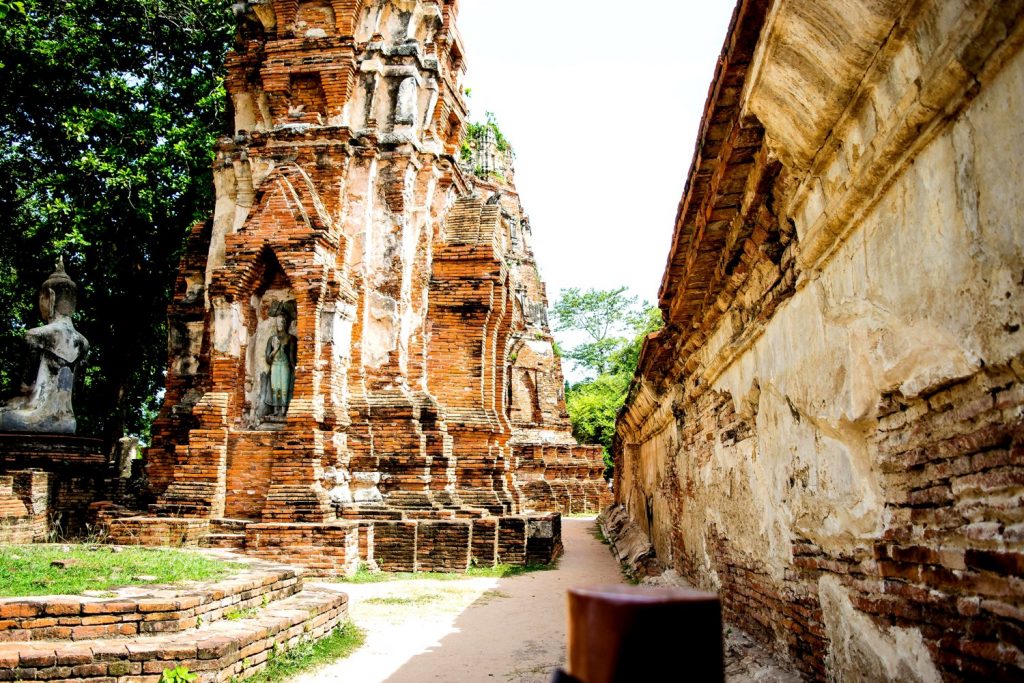
There are around 74 points of interest in Ayutthaya that include various chedis, temples, parks, museums and monuments. This means tourists will never run out of things to do there.
Depending on your travel goals, it is best to spend at least three days in the province, as a day trip in Ayutthaya isn’t enough. Apart from the structures, there are also remnant of Japanese and Portuguese settlements in Ayutthaya, according to Ayutthaya’s TripAdvisor page.
WANT TO STAY LONGER IN THAILAND? CONSIDER TEACHING ENGLISH by earning a tefl or tesol certificate. take advantage of OUR exclusive AFFILIATE discount for our readers on PREMIER TEFL.
Featured Image by Jake Descalso
